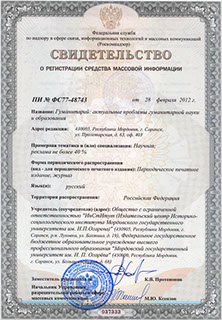Navigation
ISSN 2078-9823 (Print), ISSN 2587-7879 (Online)
DOI: 10.15507/2078-9823.042.018.201802.170-183
Lev I. Titlin
Institute of Philosophy, Russian Academy of Sciences (Moscow, Russia), e-mail: titlus@gmail.com ORCID: http://orcid/org /0000-0003-2625-8483.
THE POLEMICS OF SHANTARAKSHITA AND KAMALASHILA WITH THE MIMANSAKAS ON THE EXISTENCE AND PROPERTIES OF ATMAN IN TATTVASAMGRAHA-PANJIKA (TRANSLATION OF AN EXCERPT)
Introduction. Shantarakshita is a Buddhist philosopher of the 8th century, one of the most important Buddhist thinkers of India and Tibet, a representative of the Mahayana Yogachara-svatantrika-madhyamaka school. The most famous work of Shantarakshita is “Tattvasangraha” (“Collection of Essential [Problems]”, or “Compendium of Categories”) is a large-scale polemical work, in twenty-six chapters of which the author criticizes twenty-six basic concepts of the main philosophical schools of India (Samkhya, Nyaya, Vaiseshika, Mimamsa, Lokayata, Yoga, Vedanta, and also Jainism and Buddhism of other schools). In the section “The Polemics with the Mimamsakas” of the chapter «Atmapariksha» (lit. «Study of Atman») of «Tattvasangraha» of Shantarakshita with the commentary «Panjika» of Kamalashila philosophical polemics between Buddhism and Mimamsa, school of antient Indian philosophy on the question of the existence and properties of self is taking place. The purpose of the article is to provide the reader with the first translation from Sanskrit into Russian of the section “The Polemics with the Mimamsakas” of the chapter «Atmapariksha» (lit. «Study of Atman») of «Tattvasangraha» of Shantarakshita with the commentary «Panjika» of Kamalashila. Materials and Methods. in the article the comparative-historical method, the method of comparative analysis, a widespread methodology of philosophical translation from Sanskrit into Russian is used. The translation was made from the critical edition of S. D. Shastri. The only translation of the text into English by G. Jha was also used. Results. In the course of the study it was shown that according to the Mimansakas, atman has a form of consciousness (caitanya) and exclusive and inclusive nature. Exclusive – as the seat of satisfaction and dissatisfaction, etc., which are mutually exclusive states, inclusive – as a sequence of consciousness, essentiality, good qualities, etc. Shantarakshita criticizes the Mimamsakas’ position, revealing contradictions in their internal philosophical logic. Discussion and Conclusions. It is concluded that Shantarakshita’s main argument in the dispute with the Mimamsakas is that, in his opinion, there is a contradiction between the concept of the eternal and unchanging atman and its properties as a cognizing and acting subject. Indeed, Buddhists here proceed from experience that says that all our knowledge is transitent and changeable, and we do not find within ourselves any eternal and unchangeable self. Even if it was, it could not have anything to do with the particular changeable facts of the psyche and the moments of consciousness. Thus, Shantarakshita concludes, the concept of unchanging Atman as a reality is only an illusion of the psyche, which is not confirmed by any real experience and enters into a logical contradiction with the facts.
Keywords: Shantarakshita, Kamalashila, “Tattvasangraha”, “Panjika”, atman, purusha, self, no-self, atman, soul, denial of self, subjectivity.
For citation: Lev I. Titlin. The Polemics of Shantarakshita and Kamalashila with the Mimansakas on the Existence and Properties of Atman in Tattvasamgraha-Panjika (Translation of an Excerpt). Gumanitarian : aktual’nye problemy gumanitarnoi nauki i obrazovaniia = Russian Journal of the Humanities. 2018; 18(2): 170–183. (In Russ.). DOI: 10.15507/2078-9823.042.018.201802.170-183

© Ogarev Mordovia State University. History and Sociology Institute, 2017
68, Of. 411, Bolshevistskaya St., 430005, The editorial office of the scholarly journal «Russian Journal of the Humanities»
Tel.: (8342) 24-25-90; 27-07-11, Fax: (8342) 24-25-90, E-mail: jurnal-econom-hist@isi.mrsu.ru
Designed by A. Napalkov, Email: napalkov@isi.mrsu.ru

